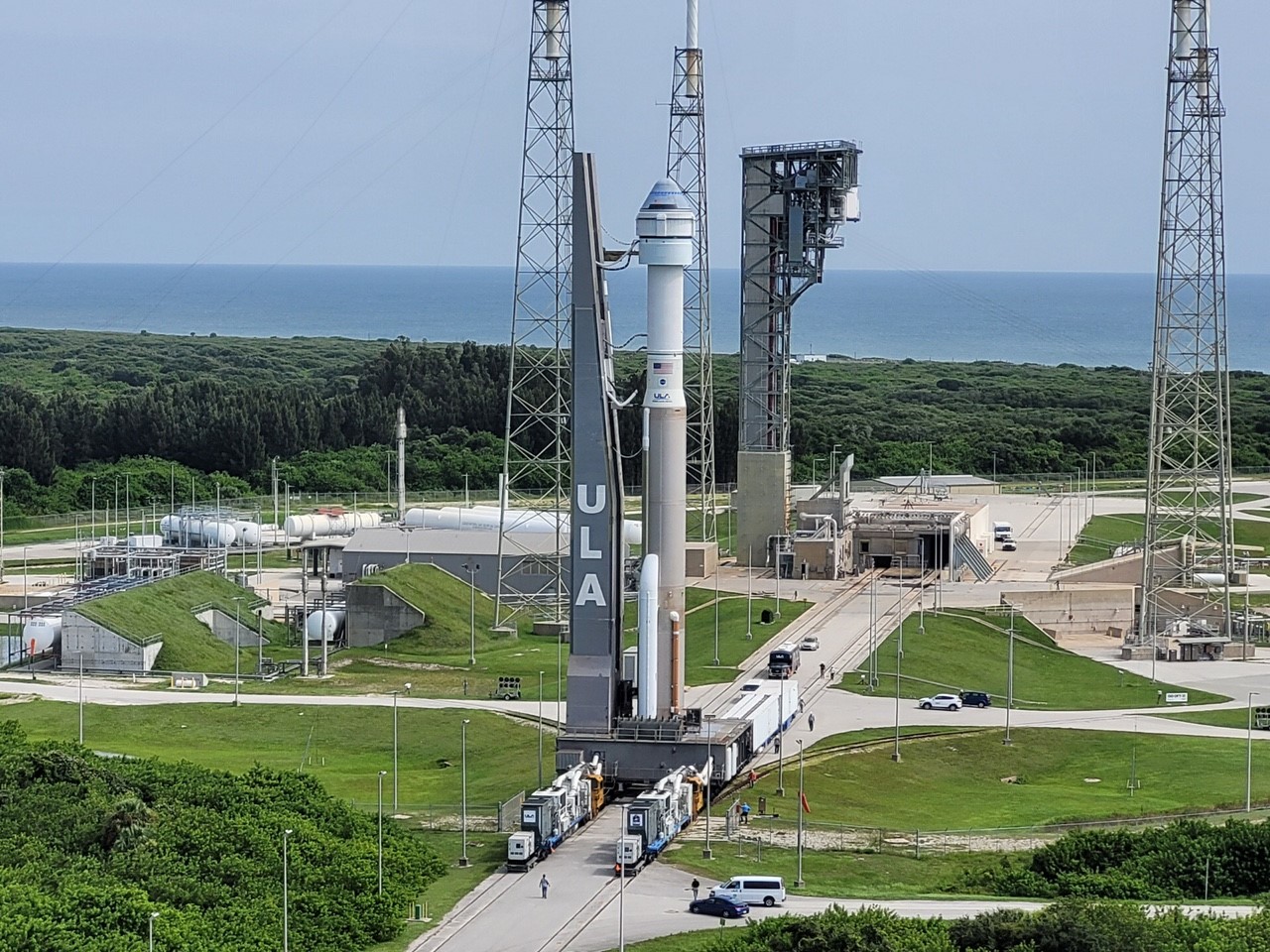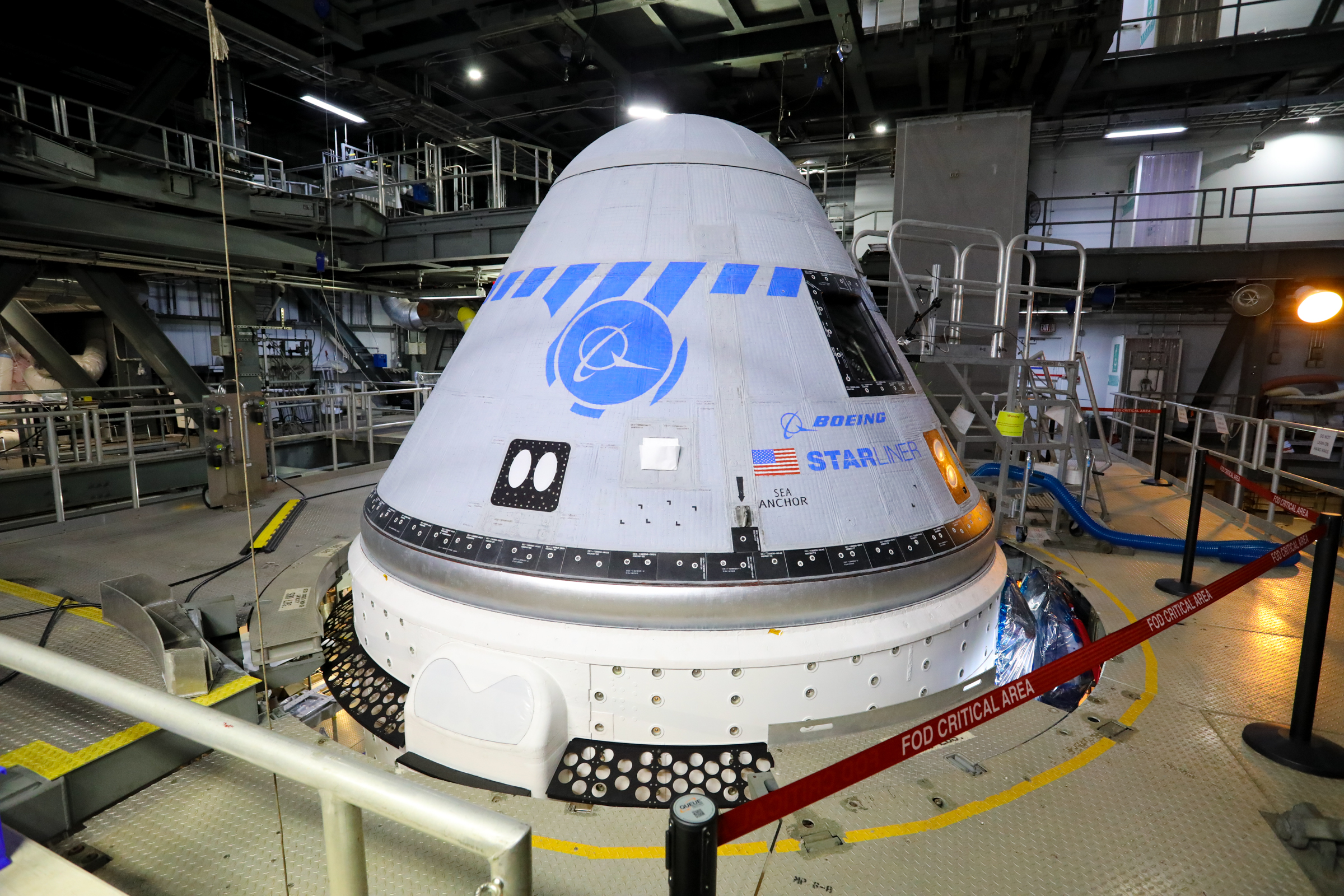
KENNEDY SPACE CENTER, FL – The hard luck Boeing Starliner suffered another serious setback Friday involving a many months long launch delay for the critical second test flight to the International Space Station (ISS) when company officials concluded that much more time was needed to fix faulty propulsion valves discovered inside the spaceships service module and forcing a scrub during the Aug. 3 countdown.
After days of round-the-clock intense effort the Boeing and NASA teams concluded that severity of the needed repairs to restore full functionality and the ongoing search for a definitive root cause could only be done by destacking of the Starliner astronaut ferry ship from atop the United Launch Alliance (ULA) Atlas V rocket at pad 41 and rolling it back to the manufacturing facility at NASA’s Kennedy Space Center in Florida, officials announced at a news media briefing Friday afternoon, Aug. 13.
As a result the launch of the Boeing Starliner on the Orbital Flight Test-2 (OFT-2) test flight on what amounts to a redo mission for NASA to the ISS is indefinitely postponed towards the end of this year at the earliest and possibly even into 2022 – depending on how long it takes for the valve fixes can be made and verified and furthermore finding an opening in the busy schedule of visiting vehicles to the ISS.
“We have to have the maturity to stop, investigate and sit before flying again,” said Kathy Lueders, NASA’s chief of space operations, at the media briefing. “And that is what we are doing. We fly when we are ready.”
The decision to destack Starliner from the ULA Atlas V inside the Vertical Integration Facility (VIF) on Cape Canaveral Space Force Station and transport it back to Boeing’s Commercial Crew and Cargo Processing Facility (C3PF) processing facility at KSC will enable engineers much greater access to carry out deeper level troubleshooting on the entire propulsion system and service module and reliably and robustly restore full movement and functionality to the valves.
“Alongside @BoeingSpace, we have decided to postpone the launch of the Orbital Flight Test-2 mission. Teams will now move Starliner back to the Commercial Crew and Cargo Processing Facility for deeper-level troubleshooting on the service module’s valves,” NASA’s Commercial Crew Program tweeted.
Alongside @BoeingSpace, we have decided to postpone the launch of the Orbital Flight Test-2 mission.
Teams will now move Starliner back to the Commercial Crew and Cargo Processing Facility for deeper-level troubleshooting on the service module's valves: https://t.co/BdNpjsWzZN pic.twitter.com/VA6VPKLxqz
— NASA Commercial Crew (@Commercial_Crew) August 13, 2021
To date Boeing said they fixed 9 of the 13 oxidizer propulsion valves on the Starliner service module after rolling the Atlas V stack back off pad 41 and back inside the VIF where engineers could working inside – after it was discovered that they could not be opened after they had been stuck closed during the ultimately scrubbed launch countdown on Aug. 3.
We've determined #Starliner will return to our factory for deeper-level troubleshooting of four propulsion system valves. With @NASA, we've decided to stand down for this launch window to make way for other national priority missions.
More: https://t.co/oycWeRz156 pic.twitter.com/UzCZN66451
— Boeing Space (@BoeingSpace) August 13, 2021
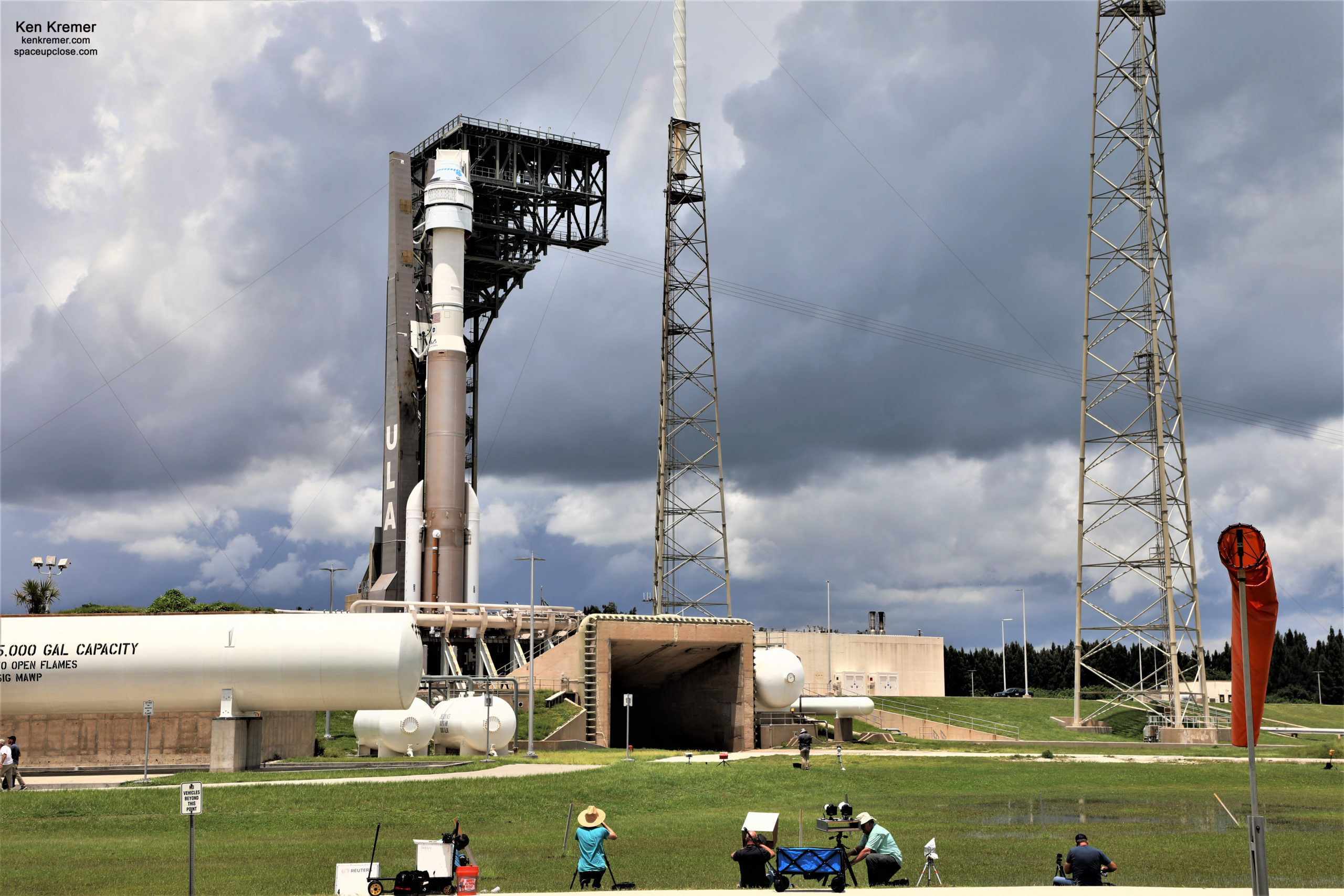
The leading cause for the stuck valves is permeation of highly toxic and corrosive oxidizer NTO (Nitrogen tetroxide) through a Teflon barrier seal in the propulsion valve into a cavity with traces of water that results in the formation of nitric acid.
The source of the water contamination might be either atmospheric moisture in the humid summer Florida environment or drenching rainstorms that hit pad 41 the day before on Aug. 2.
“The most probable cause of what we’re looking at is that we’re seeing some permeation of the oxidizer through some of the seals in the valve itself,” said John Vollmer, vice president and program manager of Boeing’s commercial crew program, during the media briefing.
“There was some moisture on the dry side of the valve, and that interaction, we believe, created some nitric acid. That nitric acid resulted in some corrosion which resulted in the stiction of those valves.”
#Starliner teams continue to work around the clock to return functionality to propulsion system valves, with nine of 13 operating normally. In parallel, we're working with @NASA and @AerojetRdyne to determine the cause of the issue.
Learn more: https://t.co/PqKj865PsZ pic.twitter.com/ySK5pnJiEC
— Boeing Space (@BoeingSpace) August 12, 2021
Vollmer said it was yet to be determined if the affected valves would be replaced
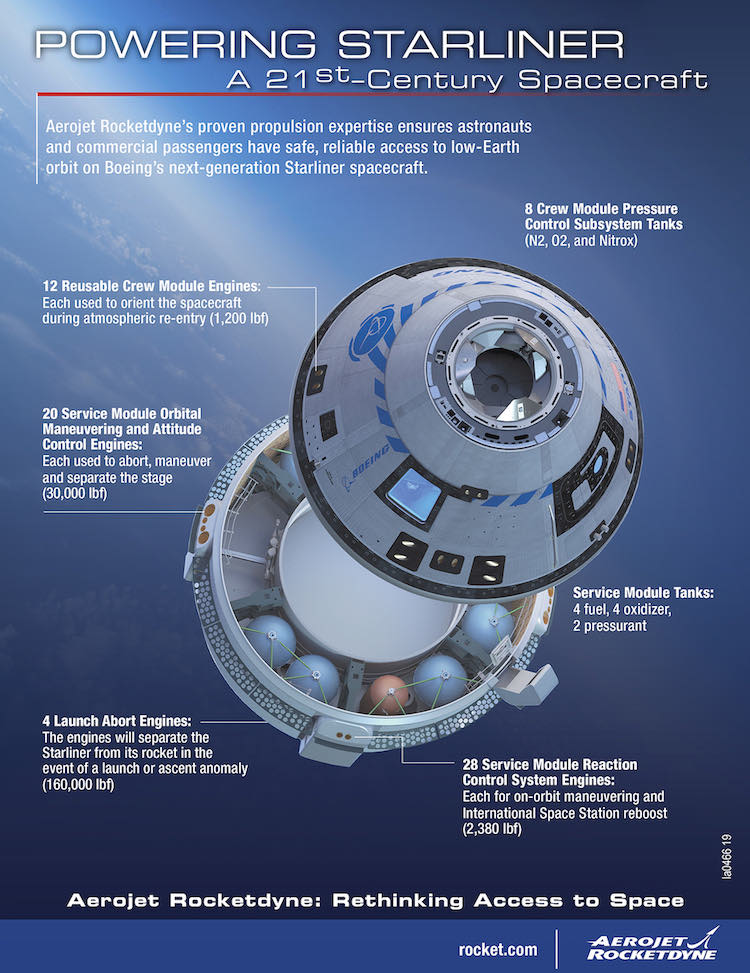
Neither NASA nor Boeing managers would even hazard a guess as to when Starliner might launch – given all the uncertainties with the ongoing investigation still in its infancy.
Starliner will have to wait months at a minimum because of other high priority launches like the SpaceX Cargo Dragon slated for liftoff for NASA to the ISS on NET Aug. 28 and NASA’s Lucy mission to investigate Trojan asteroids launching on another ULA Atlas V on Oct. 16.
The immutable launch window for the higher priority Lucy probe runs to Nov. 5.
Starliner will also have to wait until after the SpaceX Crew 3 launch slated for Oct. 31 and the return of Crew-2 in early November 2021 in order to free up one of only two available docking ports
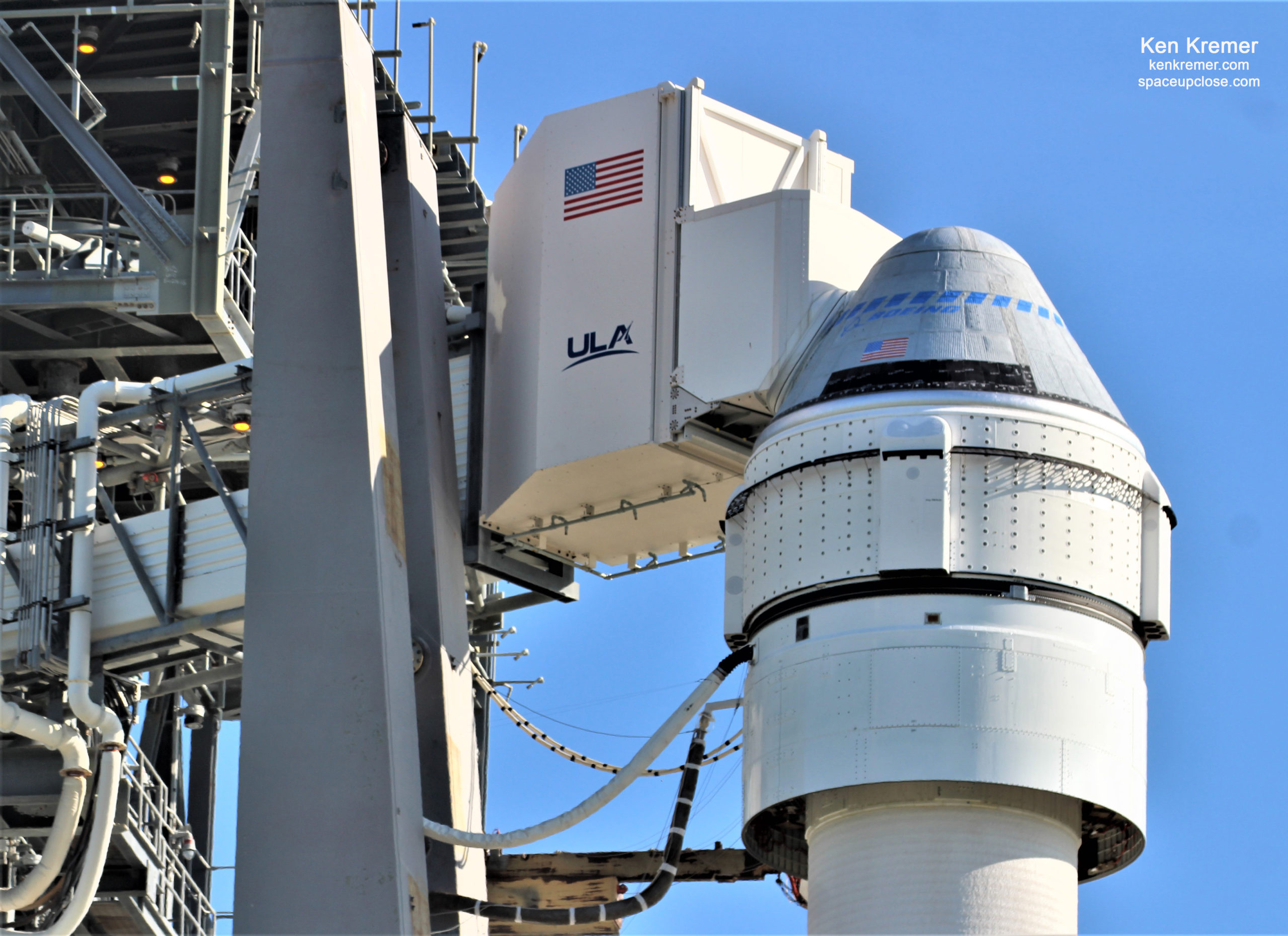
“It’s pretty early to speculate on when the flight might end up,” said Steve Stich, NASA commercial crew program manager. “When we get to a point where we understand the cause and the fixes, we will work hard to find that slot and get the vehicle flown as soon as we can.”
The uncrewed OFT-2 is Boeings second attempt at an unpiloted test flight to reach the International Space Station (ISS) from Florida’s Spaceport.
OFT-2 essentially amounts to a ‘redo’ mission to prove the commercial system can safely carry NASA astronauts to and from the International Space Station (ISS) on its second try.
Starliner failed to dock on the inaugural problem plagued original Orbital Flight Test (OFT) mission in Dec. 2019 due to a host of software and hardware issues with the capsule.
Boeing spent 18 months to fix Starliner and implemented some 80 recommendations from NASA and an Independent Review Board
The Aug. 3 scrub was the second Starliner launch delay in less than a week following the inadvertent thrust firing incident of the newly docked Russian Nauka science module on July 29 that forced a postponement of the then planned liftoff targeted for July 30 following the inadvertent thrust firing incident of the newly docked Russian Nauka science module on July 29.
The goal of OFT-2 mission is to test the end-to-end capabilities of Starliner from launch to docking, atmospheric re-entry, and a desert landing in the western United States.
OFT-2 will provide valuable data that will help NASA certify Boeing’s crew transportation system to carry astronauts to and from the space station.
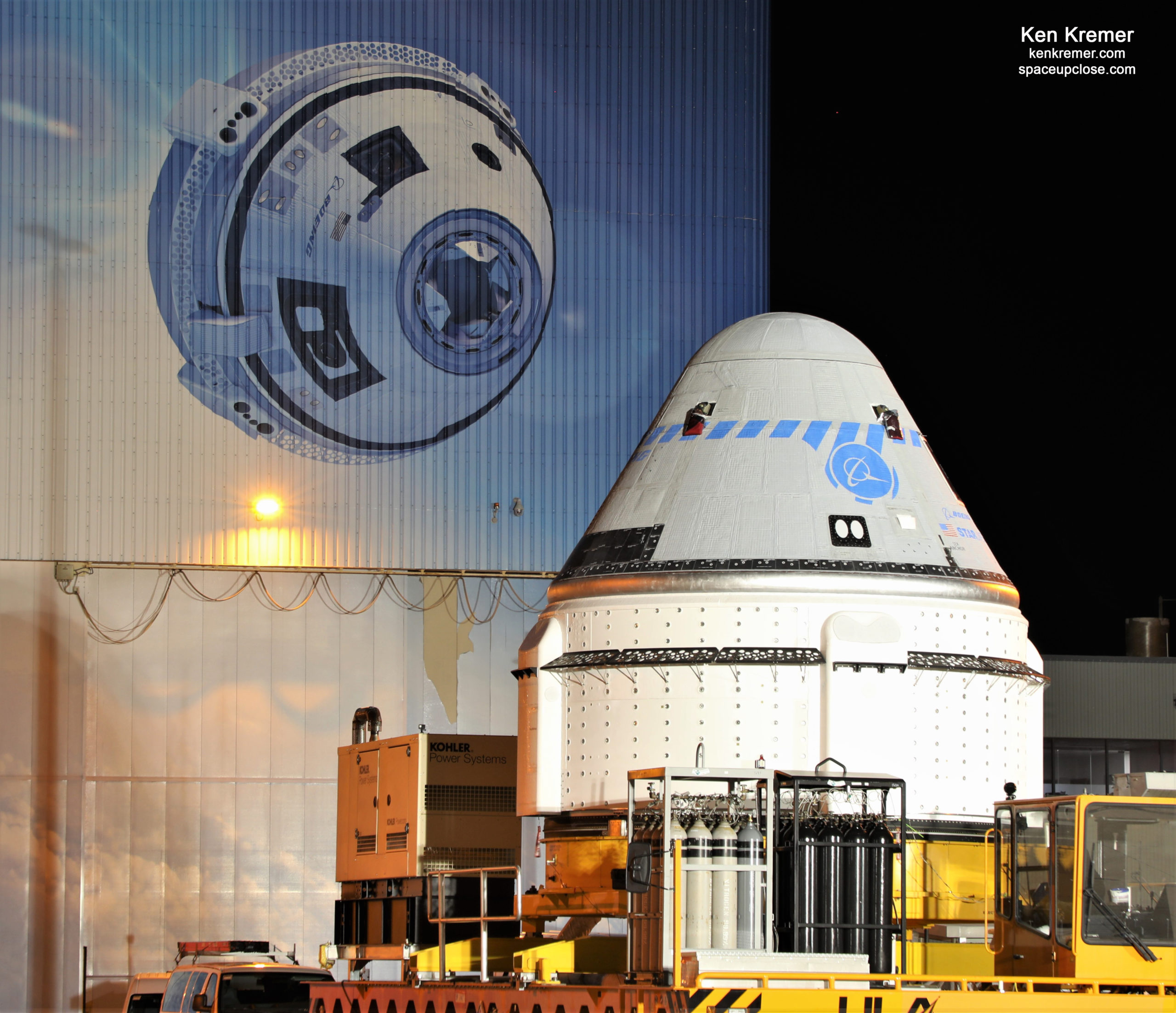
The Boeing Starliner is part of NASA’s Commercial Crew Program (CCP) to restore human spaceflight launch capabilities to the US and end total reliance on the Russian Soyuz crew capsule.
NASA’s other Commercial Crew Program (CCP) partner SpaceX has already successfully launched three crews of astronauts to the ISS since May 2020.
Boeing will fly this second uncrewed Starliner mission OFT-2 at their own expense of some $420 million on an Atlas V that was targeting liftoff Aug. 3 to prove to NASA the vehicle is safe and reliable.
OFT-2 is the last flight before the Starliner system launches American astronauts on the Crew Flight Test to the microgravity laboratory – the first flight test with crew on board.
If all had gone well with OFT-2 a trio of NASA astronauts were to fly on the first crewed Starliner mission dubbed CFT (Crew Flight Test) perhaps as soon as years end – if Starliner launch had launched soon.
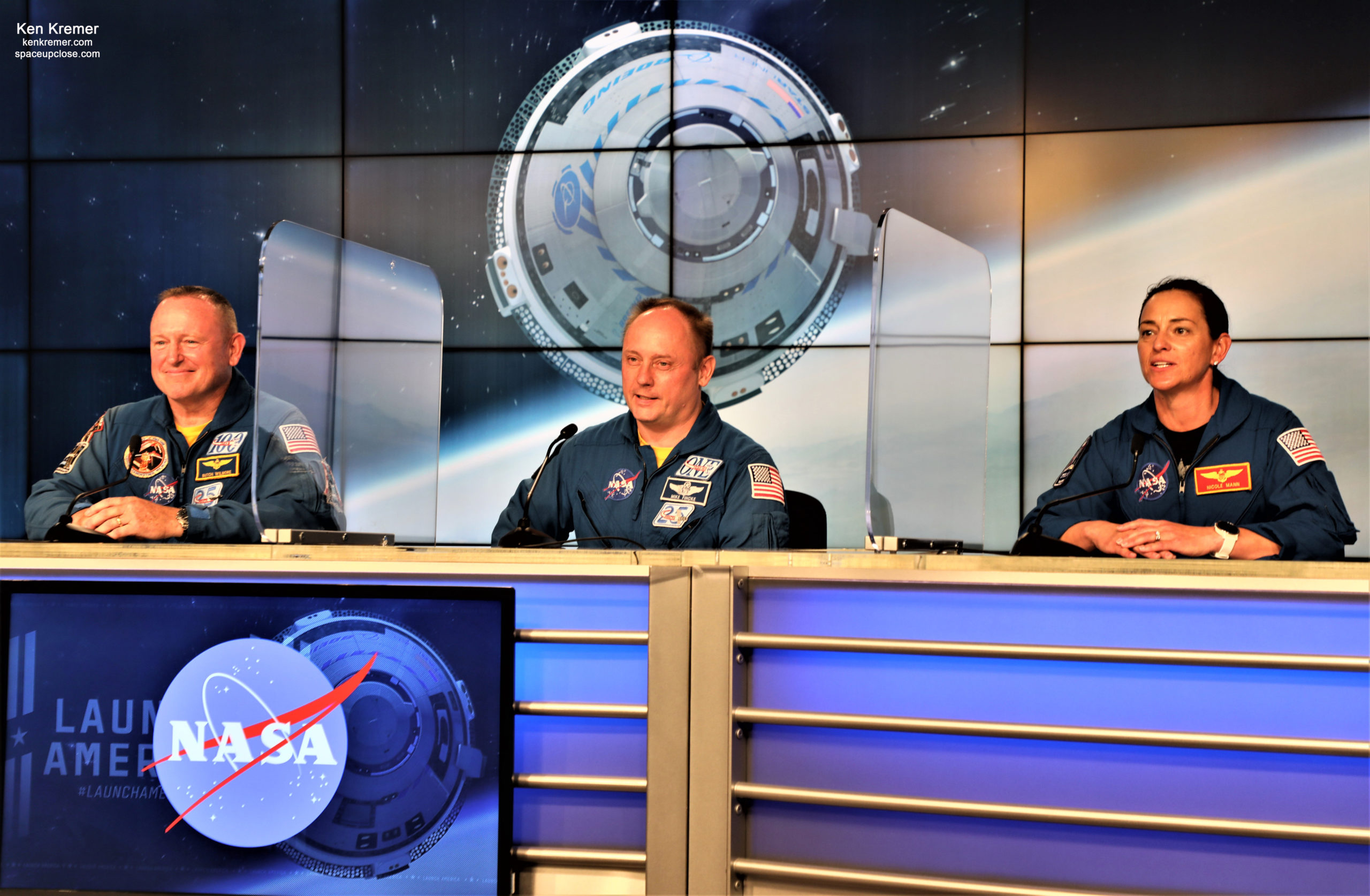
The CFT crew launch is now postponed to 2022.
The CFT crew of NASA astronauts comprises Barry ‘Butch’ Wilmore, Mike Fincke & Nicole Mann.
Great images of our troubleshooting teams at work! #Starliner is safely in the @ulalaunch’s VIF where @BoeingSpace can fix things and get back to a countdown. Being careful and smart…#NASA #OFT2 #atlasv https://t.co/O9LHDoPdhl
— Col. Mike Fincke (@AstroIronMike) August 6, 2021
My interviews about the ISS, Starliner and Nauka, the rollout and the importance of the mission were featured on WESH 2 NBC Orlando on Aug. 4/5, WKMG CBS 6 and Spectrum News 13 on Aug. 3 & 4, Fox 35 Orlando on July 26, WFTV ABC 9 News Orlando on Aug. 4, July 22 & 23 and WESH 2 NBC News Orlando on July 18 & 19.
https://www.fox35orlando.com/news/nasa-boeing-prepare-for-second-run-at-starlink-launch
https://www.wesh.com/article/boeing-starliner-now-in-brevard-prepares-for-test-flight-redo/37067233
Watch Ken’s continuing reports about ISS, Starliner and Commercial Crew and Crew Dragon, Artemis and NASA missions, SLS, Orion, SpaceX, Starlink from onsite for live reporting of upcoming and recent SpaceX and ULA launches including Crew 1 & 2, Demo-2, ISS, X-37B, Solar Orbiter, Mars 2020 Perseverance and Curiosity rovers, NRO spysats and more national security missions and more at the Kennedy Space Center and Cape Canaveral Space Force Station.
Stay tuned here for Ken’s continuing Earth and Planetary science and human spaceflight news: www.kenkremer.com –www.spaceupclose.com – twitter @ken_kremer – email: ken at kenkremer.com
Dr. Kremer is a research scientist and journalist based in the KSC area, active in outreach and interviewed regularly on TV and radio about space topics.
………….
Ken’s photos are for sale and he is available for lectures and outreach events
Please consider supporting Ken’s work by purchasing his photos and/or donating at Patreon:
https://www.patreon.com/kenkremer
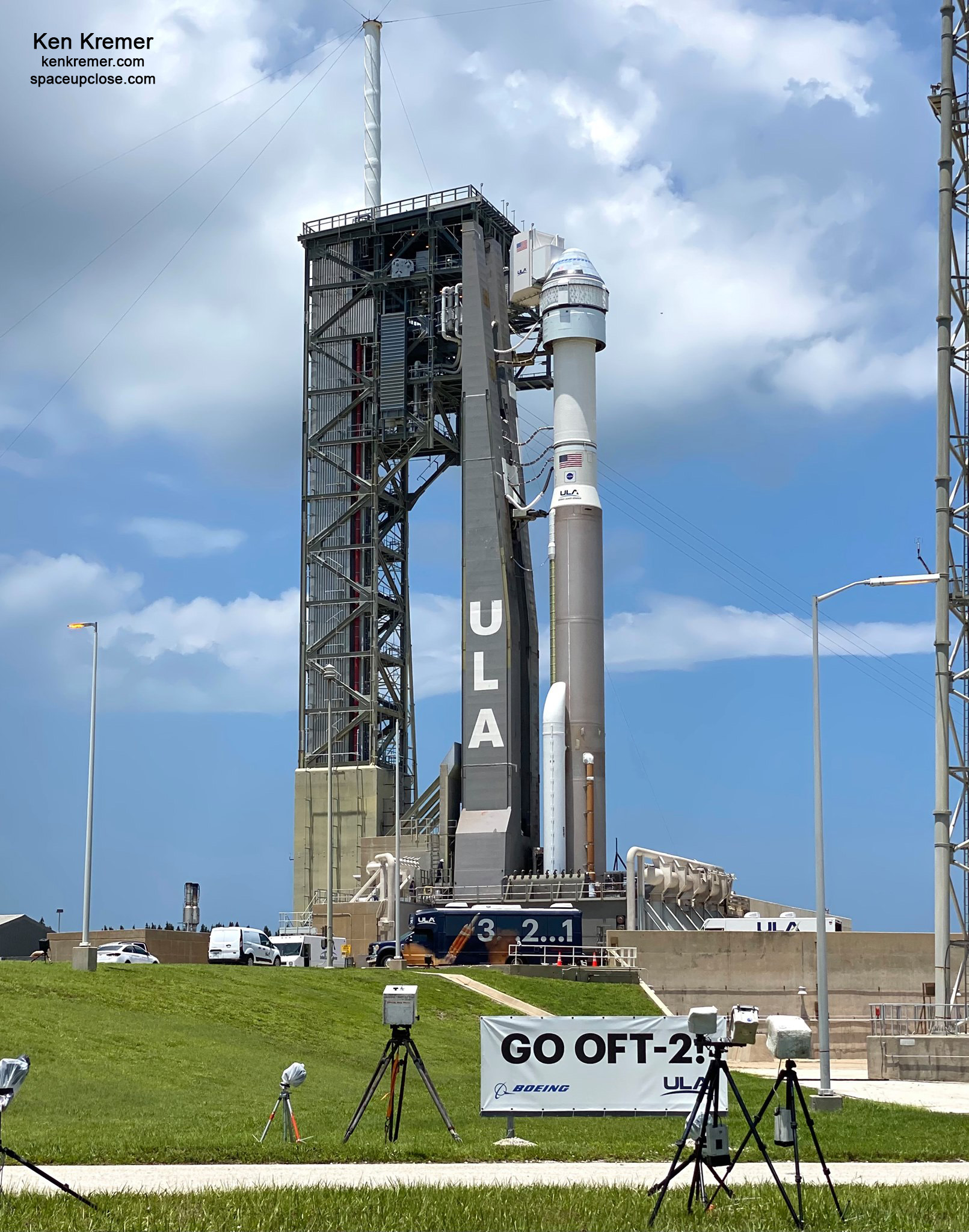
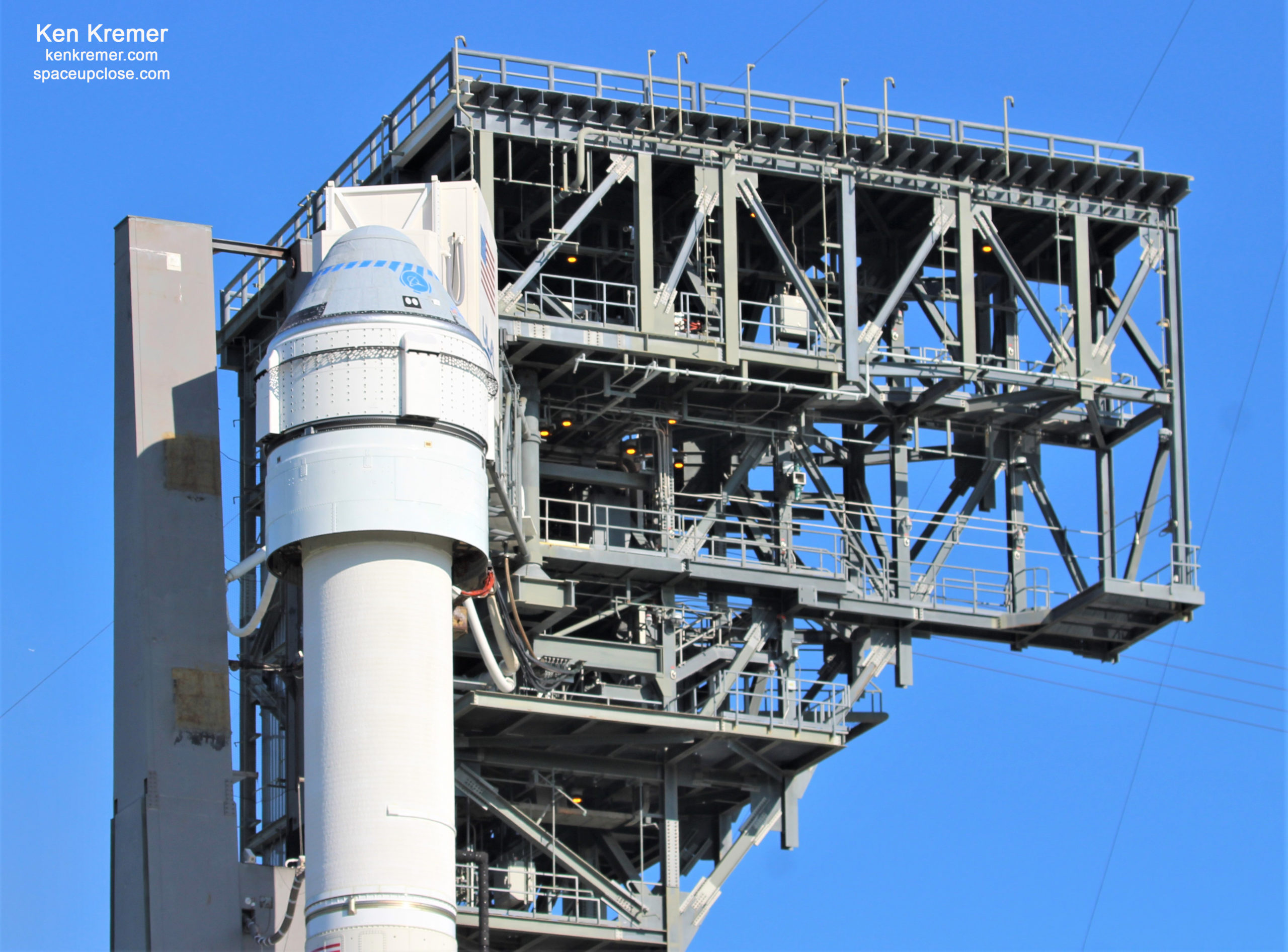
x


